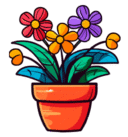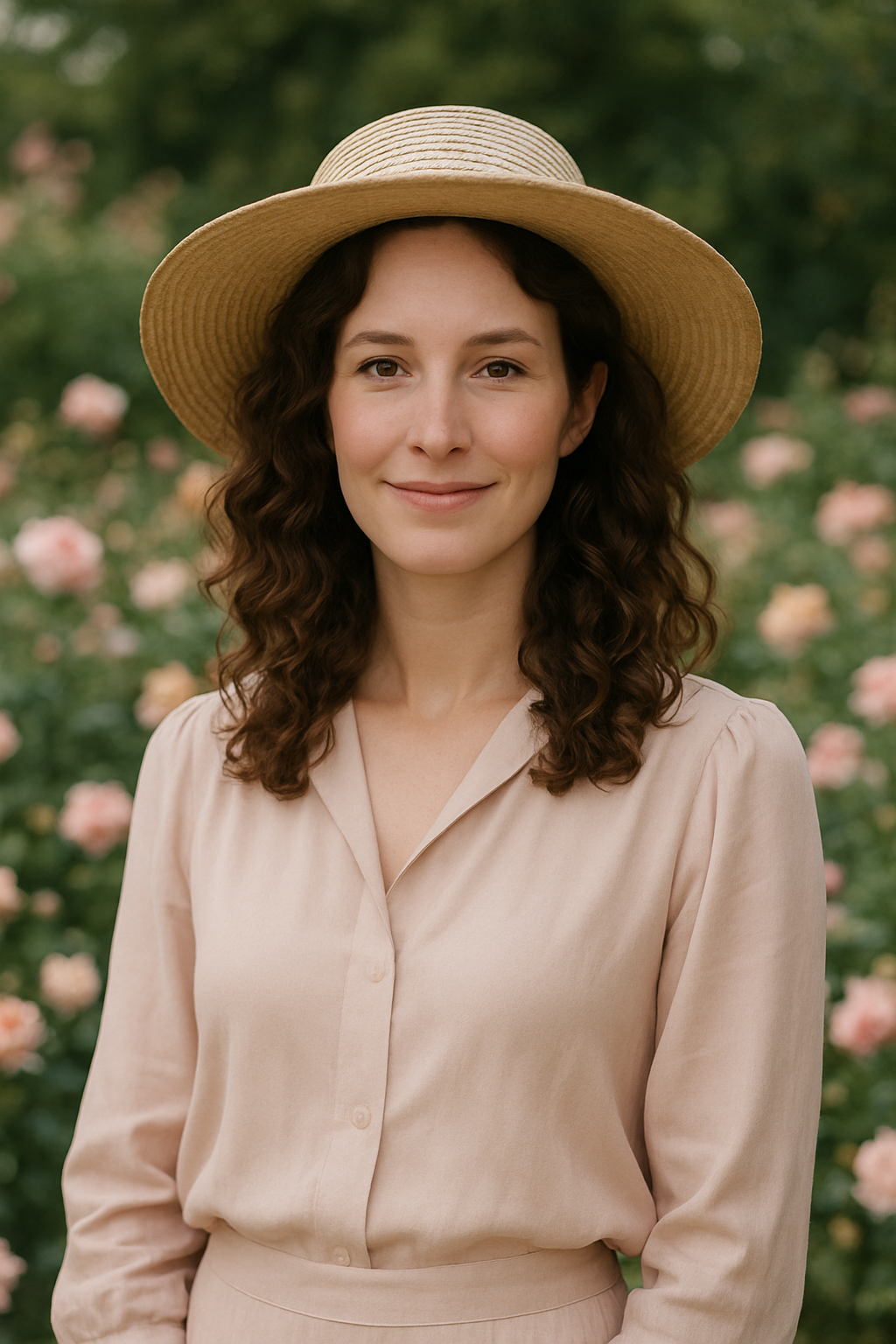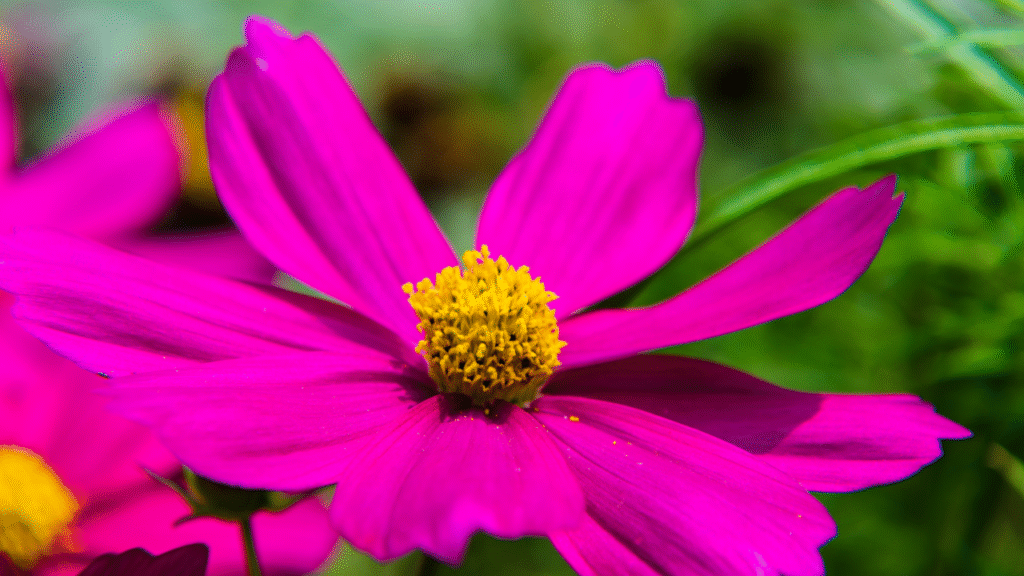
If you’ve ever planted a zinnia, you already know they’re more than just flowers—they’re little bursts of joy that brighten up any garden bed. I still remember the first time I saw a zinnia bloom in my garden. It stood tall, vibrant, and proud, as if it knew it had a job to do: to bring beauty and happiness into my world. That summer, I learned just how special zinnias are—not just for bouquets and borders, but for the heart.
Over the years, I’ve grown hundreds of zinnias and discovered so many fascinating facts about them—some that made me laugh, some that saved my garden, and others that made me fall even more in love. Whether you’re growing your very first flower or your fiftieth, this guide is here to share those same discoveries with you. So grab your gloves and a warm cup of tea—let’s dive into these 20 amazing zinnia facts every gardener should know.
Why Zinnias Are a Must-Have in Your Garden
The History and Origin of Zinnias
Did you know zinnias are actually native to Mexico and parts of Central America? Long before they made their way into backyard gardens across the U.S., these flowers were growing wild in arid, sun-soaked regions. The Aztecs admired zinnias not just for their vibrant color, but for their resilience in dry climates.
In the 1700s, European explorers were introduced to the flower and brought seeds back across the ocean. Back then, zinnias were a bit more scraggly and dull-colored, earning them the nickname “everybody’s flower” because they were so common and easy to grow. But with generations of cultivation, especially in the U.S., they became the stunning garden showstoppers we know today.
Personally, learning about zinnias’ long journey made me appreciate their simplicity even more. There’s something special about growing a flower that carries centuries of garden history right in its petals.
What Makes Zinnias a Favorite Among Gardeners
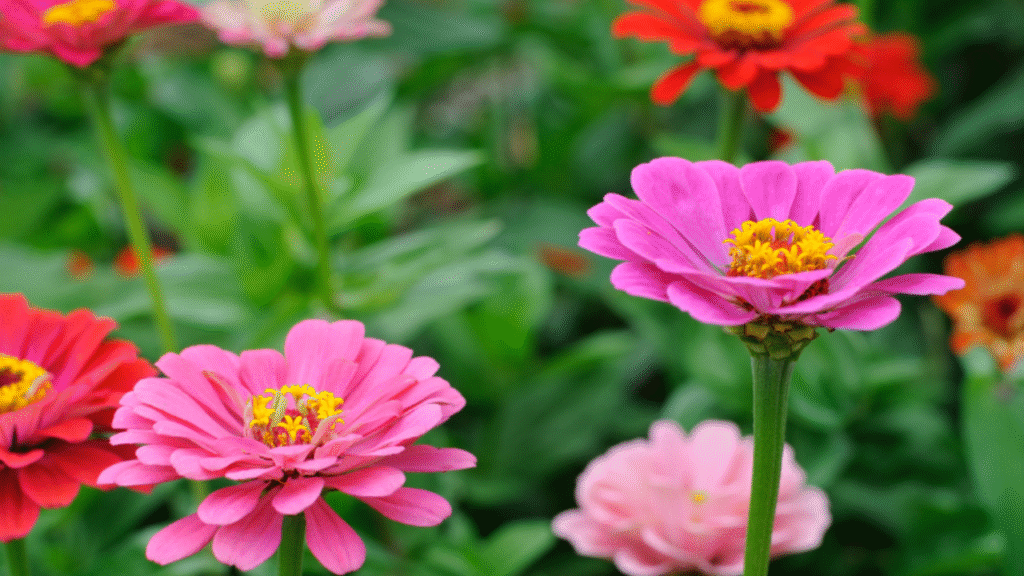
Zinnias aren’t just pretty—they’re practical, too. Ask any seasoned gardener why they plant zinnias, and you’ll hear the same reasons pop up again and again:
- Easy to grow: Perfect for beginners, zinnias don’t need much fuss.
- Long-lasting blooms: Once they start blooming, they don’t stop until frost.
- Attract pollinators: Bees, butterflies, and even hummingbirds love them.
- Great for cutting: Their strong stems and vivid colors make them ideal for bouquets.
- Tolerant of heat and drought: Especially helpful during hot U.S. summers.
One summer, during an unexpected drought, nearly everything in my garden struggled—except the zinnias. They kept blooming strong, bringing color and hope when I needed it most. That’s when I knew: zinnias weren’t just filler flowers. They were heroes.
How to Grow Healthy Zinnias from Seed
Ideal Soil, Sunlight, and Water Requirements
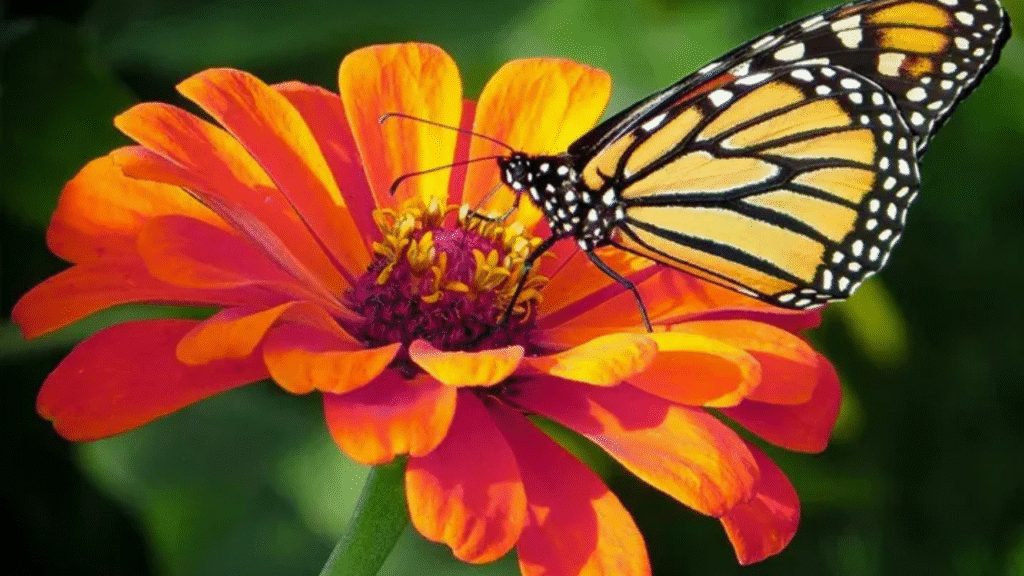
If you want your zinnias to thrive, start by giving them the foundation they deserve. These sun-loving beauties crave warmth and light—at least 6 to 8 hours of full sun every day. The more sun they get, the more blooms they’ll reward you with.
Zinnias prefer well-draining soil with a neutral to slightly acidic pH (around 5.5 to 7.5). In my early days of gardening, I made the mistake of planting them in heavy clay—and let’s just say, they didn’t exactly thrive. Once I amended the soil with compost and a bit of sand, they absolutely flourished.
Water is important, too, but don’t overdo it. Zinnias like it consistent but not soggy. I water mine early in the morning at the base of the plant to prevent mildew on the leaves.
Quick tips for healthy zinnias:
- Use compost to enrich poor soil
- Water deeply but less frequently
- Avoid overhead watering to reduce disease
- Space plants at least 6–12 inches apart for airflow
Best Time to Plant Zinnias for Maximum Blooms
Zinnias are warm-season annuals, which means they love heat and won’t tolerate frost. I usually start my zinnias after the last frost date in my USDA zone. If you’re in the U.S., check your local planting schedule—mid to late spring is often ideal.
If you’re eager like I am, you can start zinnias indoors about 4–6 weeks before the last frost. Just make sure they get plenty of light and aren’t root-bound when it’s time to transplant them outside.
Want a full season of blooms? Try succession planting! Every 2–3 weeks, tuck in a few new seeds. This simple habit ensures you’ll have zinnias blooming from early summer all the way to the first fall frost.
Pinching and Deadheading Tips for Bushier Plants
Pinching changed the game for me. When your zinnia seedlings are about 8–10 inches tall, gently pinch off the top set of leaves. I know—it feels scary! But trust me, this encourages your plant to branch out, producing multiple strong stems instead of just one tall stalk.
And deadheading? It’s essential. By regularly removing spent flowers, your plant redirects its energy into producing new blooms instead of going to seed. I keep a small pair of snips in my apron pocket and make a habit of checking my zinnias every morning—it’s honestly a peaceful little ritual.
Harvesting Zinnias for Bouquets and Arrangements
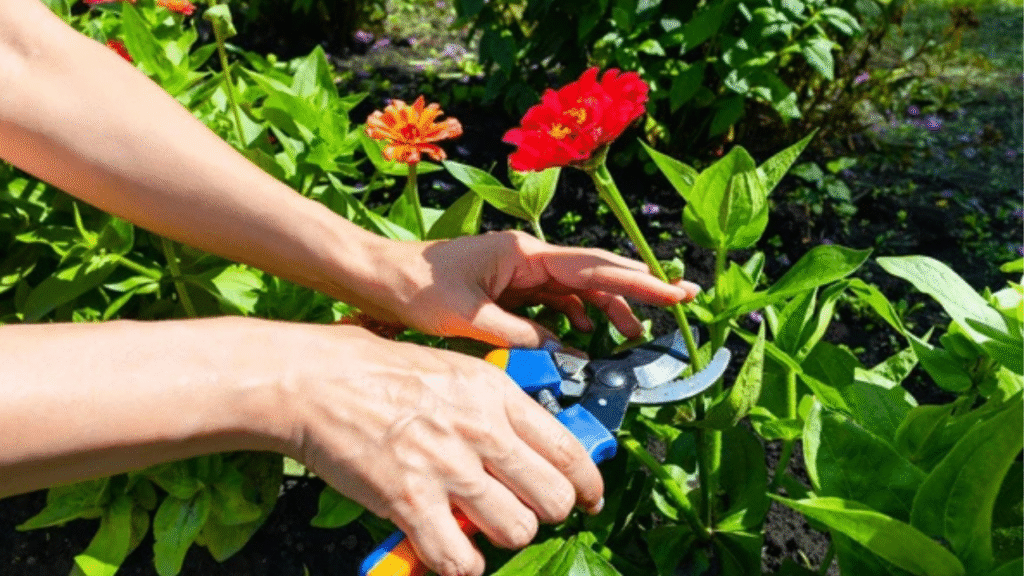
When and How to Cut Zinnias for the Vase
One of the best things about growing zinnias is bringing them indoors! But timing is key. For long-lasting bouquets, harvest zinnias when they’ve fully opened and the petals are firm—not floppy. Here’s my little trick: gently wiggle the stem about 6 inches below the bloom. If it stays straight and firm, it’s ready to cut. If it bends, wait a day or two.
Cut early in the morning or late evening when the blooms are hydrated. Always use clean, sharp snips and place stems immediately into cool water.
How to Extend the Vase Life of Your Zinnias
Zinnias can last 7–10 days in a vase if you treat them right. Here’s how I keep mine looking fresh:
- Strip all leaves that fall below the waterline
- Use a clean vase and fresh, room-temperature water
- Add a teaspoon of sugar and a drop of bleach to the water
- Change the water every 1–2 days
- Recut the stems at an angle every other day
Bonus tip: Keep your vase away from direct sunlight, ripening fruit, and hot areas of your home. Your blooms will thank you!
Best Zinnia Varieties for Cutting Gardens
Top Picks for Long Stems and Vibrant Colors
Over the years, I’ve grown dozens of zinnia types, but a few stand out for cutting. If you want tall, bold, florist-worthy blooms, try these:
| Variety Name | Height | Bloom Type | Colors Available |
|---|---|---|---|
| Benary’s Giant | 3–4 feet | Fully double | Red, pink, purple, more |
| Oklahoma Series | 2–3 feet | Semi-double/double | Pastels and brights |
| Queen Lime Series | 2–3 feet | Ruffled, double | Lime, blush, orange |
| Uproar Rose | 3–4 feet | Fully double | Deep rose pink |
Benary’s Giant is my go-to—it’s reliable, striking, and lasts long in the vase. Oklahoma mixes are perfect for softer, romantic arrangements.
Zinnias That Bloom Fast and Last Long
If you’re short on time or just impatient (no shame—I’ve been there!), choose fast bloomers like:
- Profusion Zinnias – Bloom just 50 days from seed, great for quick pops of color.
- Cut and Come Again – As the name suggests, the more you cut, the more they grow!
- Thumbelina Mix – A compact choice that’s perfect for small containers or borders.
These quick-grow varieties are especially fun for kids or new gardeners who want results fast.
Designing with Zinnias: Floral Inspiration
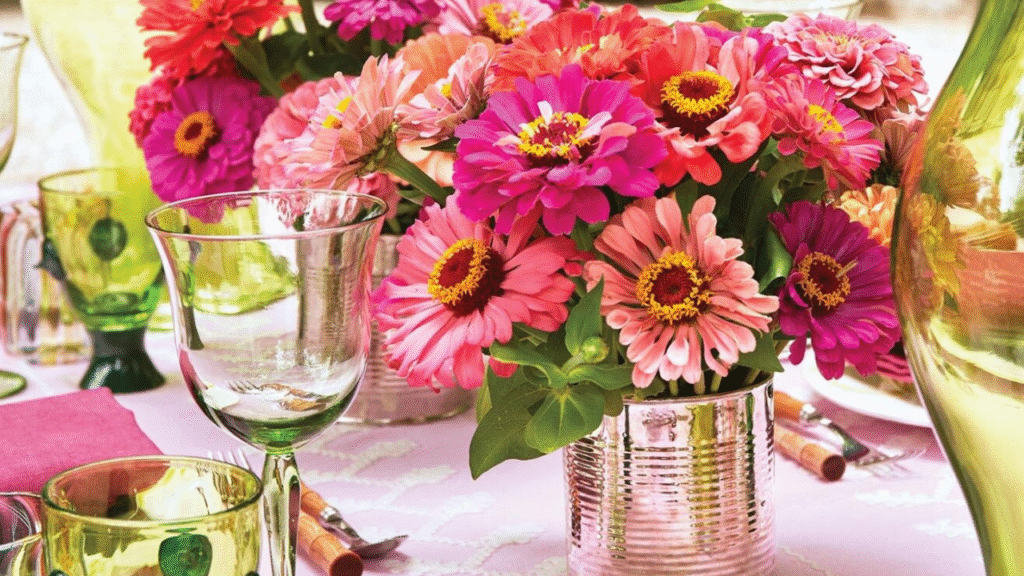
Combining Zinnias with Other Flowers in Bouquets
Zinnias are versatile and pair beautifully with so many flowers. In summer, I love mixing them with cosmos, rudbeckia, and celosia. For a soft, romantic look, try pairing Queen Lime Blush zinnias with dusty miller or eucalyptus.
If you’re into bold arrangements, Benary’s Giant zinnias look stunning next to sunflowers and snapdragons.
My go-to bouquet combos:
- Warm sunset: Orange zinnias + yellow marigolds + red celosia
- Soft blush: Queen Lime + cosmos + white lisianthus
- Bold and bright: Mixed zinnias + blue statice + bells of Ireland
Play with texture, color, and height—and most importantly, follow your heart.
DIY Zinnia Arrangements for Home Decor
Zinnias are one of the easiest flowers to arrange at home. You don’t need fancy vases or florist skills—just a few stems and a bit of love.
Here’s a super simple method I use for everyday kitchen table bouquets:
- Start with the tallest zinnia in the center
- Add 3–5 stems around it in a loose triangle
- Fill in with smaller filler flowers or greenery
- Adjust the height and spacing—don’t worry about perfection!
Sometimes I place small mason jars filled with mini zinnias on windowsills, or tie up a bunch with twine as a thoughtful gift for neighbors. There’s something magical about sharing what you’ve grown with your own two hands.
Surprising Zinnia Facts You Probably Didn’t Know
Zinnias and Pollinators: A Powerful Duo
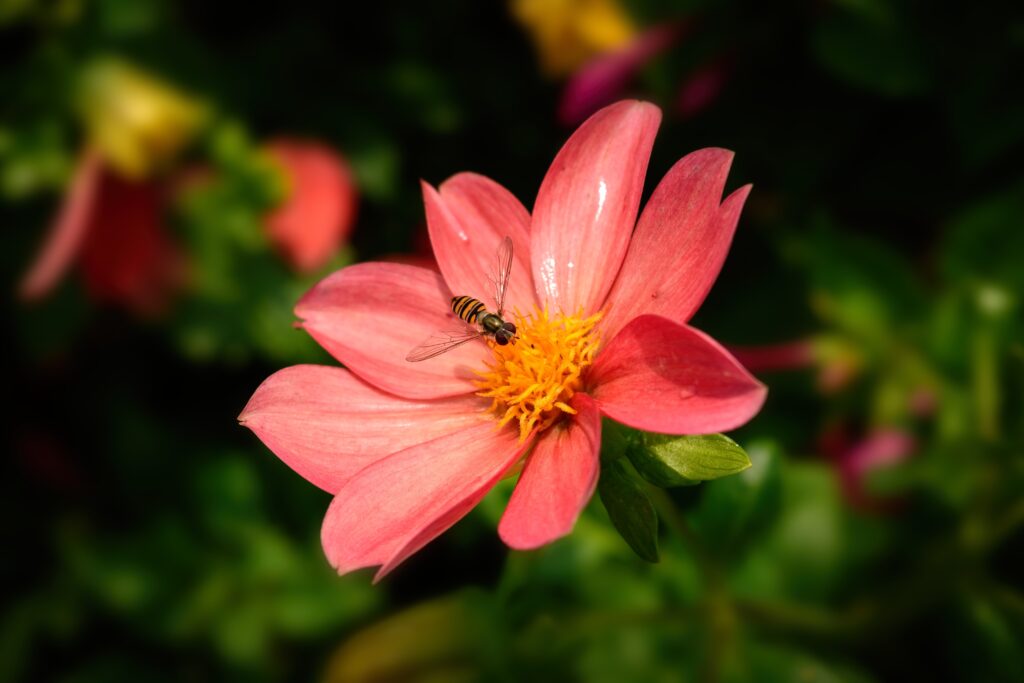
One of the most rewarding surprises in my garden was how much pollinators love zinnias. I remember sitting on my porch with a cup of coffee one morning and watching bees, butterflies, and even a hummingbird flit from bloom to bloom. It felt like the garden had come alive.
Zinnias are rich in nectar and pollen, making them a top choice for pollinator-friendly gardens. The open-petaled varieties, like the Single and Semi-Double Zinnias, are especially attractive to bees and butterflies. When you plant zinnias, you’re not just growing flowers—you’re building a tiny sanctuary for pollinators that help your entire garden thrive.
Here’s why they’re such a pollinator favorite:
- Bright, open-faced blooms make nectar easy to access
- Continuous blooming keeps pollinators coming back
- Their height gives easy visibility for flying insects
If you’re hoping to see more monarchs, swallowtails, or bumblebees, zinnias are one of the simplest ways to make that happen.
Fun Cultural and Symbolic Meanings of Zinnias
Zinnias carry a beautiful message: endurance and lasting affection. In the Victorian era, they were often given as tokens of remembrance and friendship. Some cultures even believed zinnias symbolized thoughts of absent loved ones—simple, enduring love that never fades.
In modern flower language, different zinnia colors hold unique meanings:
- Red: Steady love and passion
- Pink: Lasting friendship
- Yellow: Daily remembrance
- White: Purity and goodness
- Purple: Spiritual connection
When I learned this, I started creating color-themed zinnia bouquets for friends and neighbors. It turned out to be one of the most meaningful ways I could share not just flowers, but messages of love and care without saying a word.
Final Thoughts: Why Zinnias Belong in Every Garden
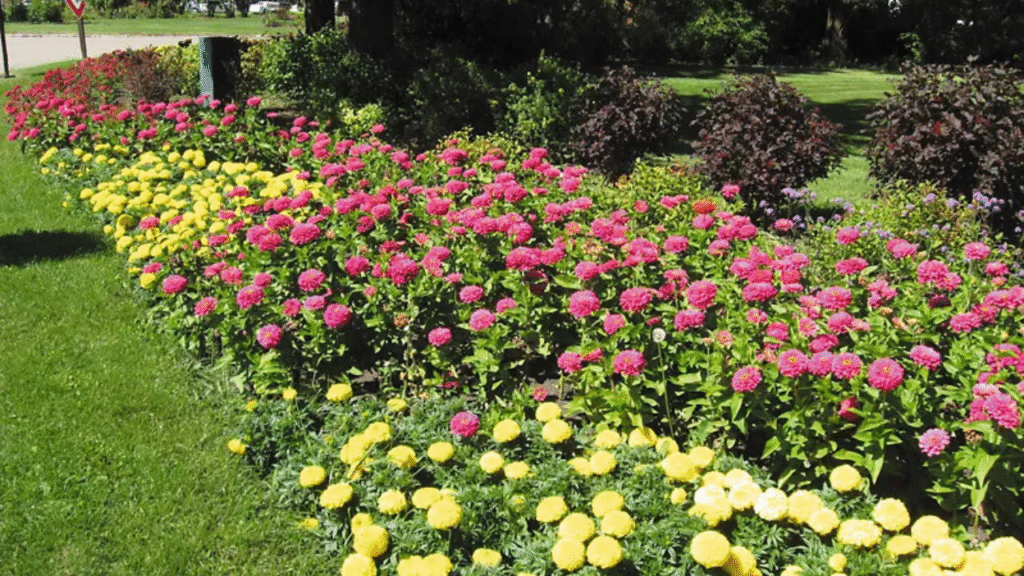
The Joy, Color, and Simplicity They Bring
There’s a reason zinnias have earned a permanent spot in my garden—and in my heart. They’re joyful, unfussy, and they reward even the most inexperienced gardener with color, life, and endless blooms. Whether you’re planting a single packet of seeds in a container or filling an entire cutting bed, zinnias will show up for you—bright and bold, like little garden cheerleaders.
When I see them swaying in the breeze or peeking out from between rows of dahlias and cosmos, I’m reminded that gardening doesn’t have to be complicated to be beautiful. Sometimes, the simplest flowers bring the greatest joy.
If you’re just starting your gardening journey, zinnias are the perfect companion. They’ll teach you patience, reward your care, and inspire you with every bloom.
From my garden to yours, happy growing.
With warmth and dirt under my nails,
Flora Lane
FAQs: Beginner Questions About Zinnias
Q1: Can I grow zinnias in pots or containers?
Absolutely! Zinnias do great in containers as long as they have full sun and good drainage. Choose dwarf or compact varieties like Profusion or Thumbelina for the best results.
Q2: Do I need to fertilize zinnias regularly?
Zinnias aren’t heavy feeders, but a light balanced fertilizer once a month can encourage lush growth and more blooms. Avoid over-fertilizing—it can lead to more leaves than flowers.
Q3: How do I prevent powdery mildew on zinnia leaves?
Spacing your plants properly for airflow, watering at the base, and avoiding overhead moisture helps prevent mildew. If it shows up, a simple neem oil spray can help control it.
